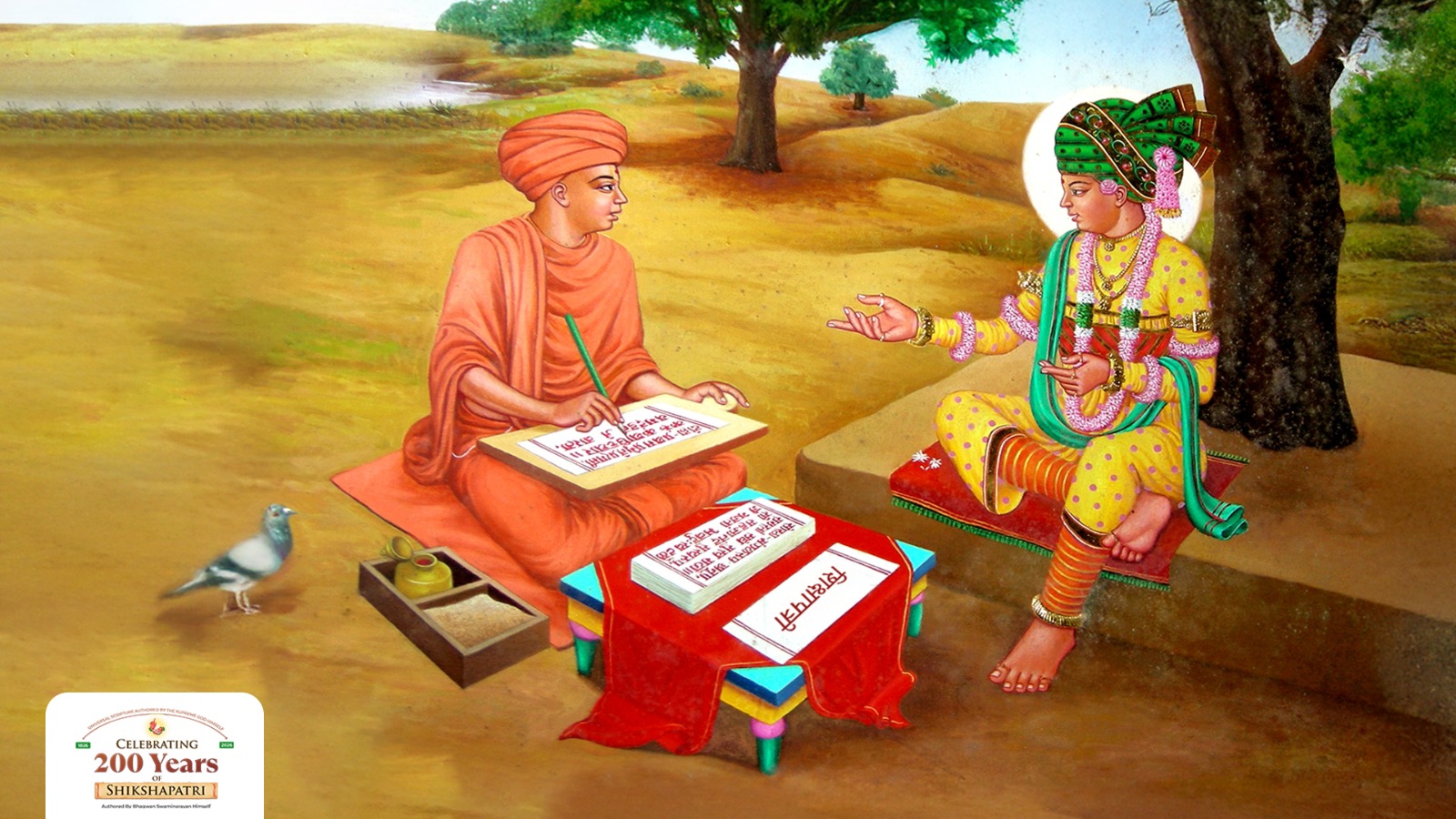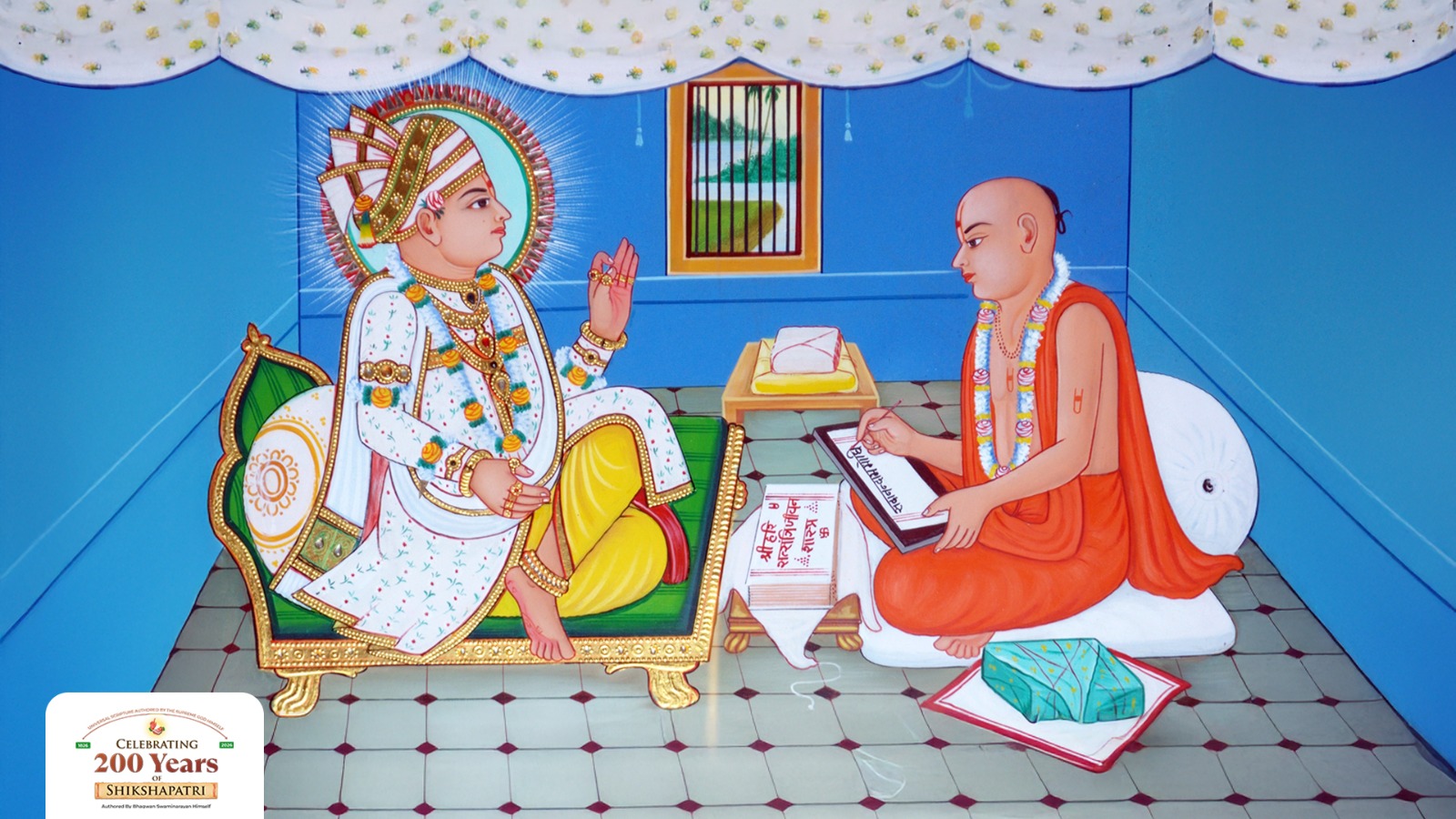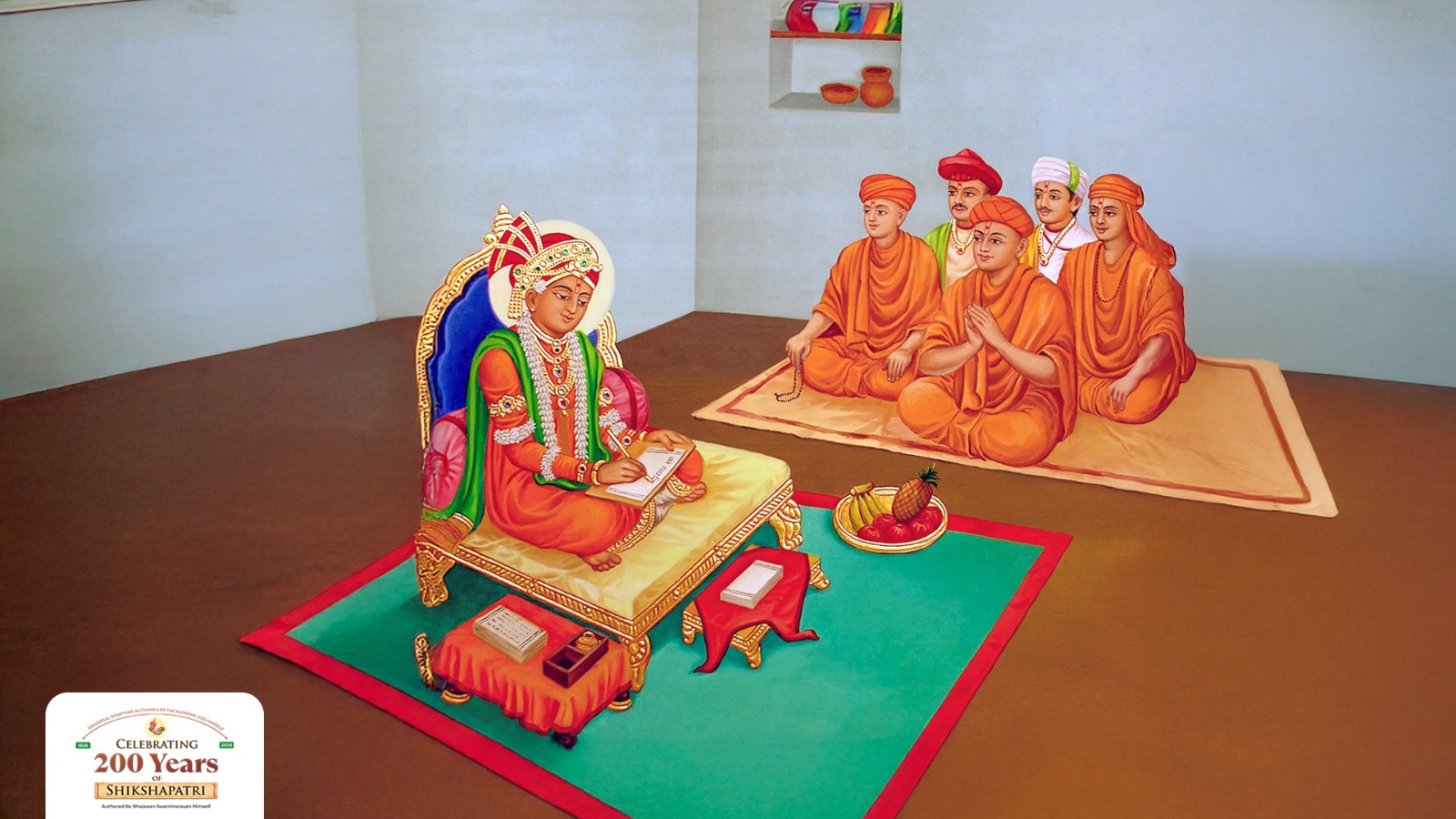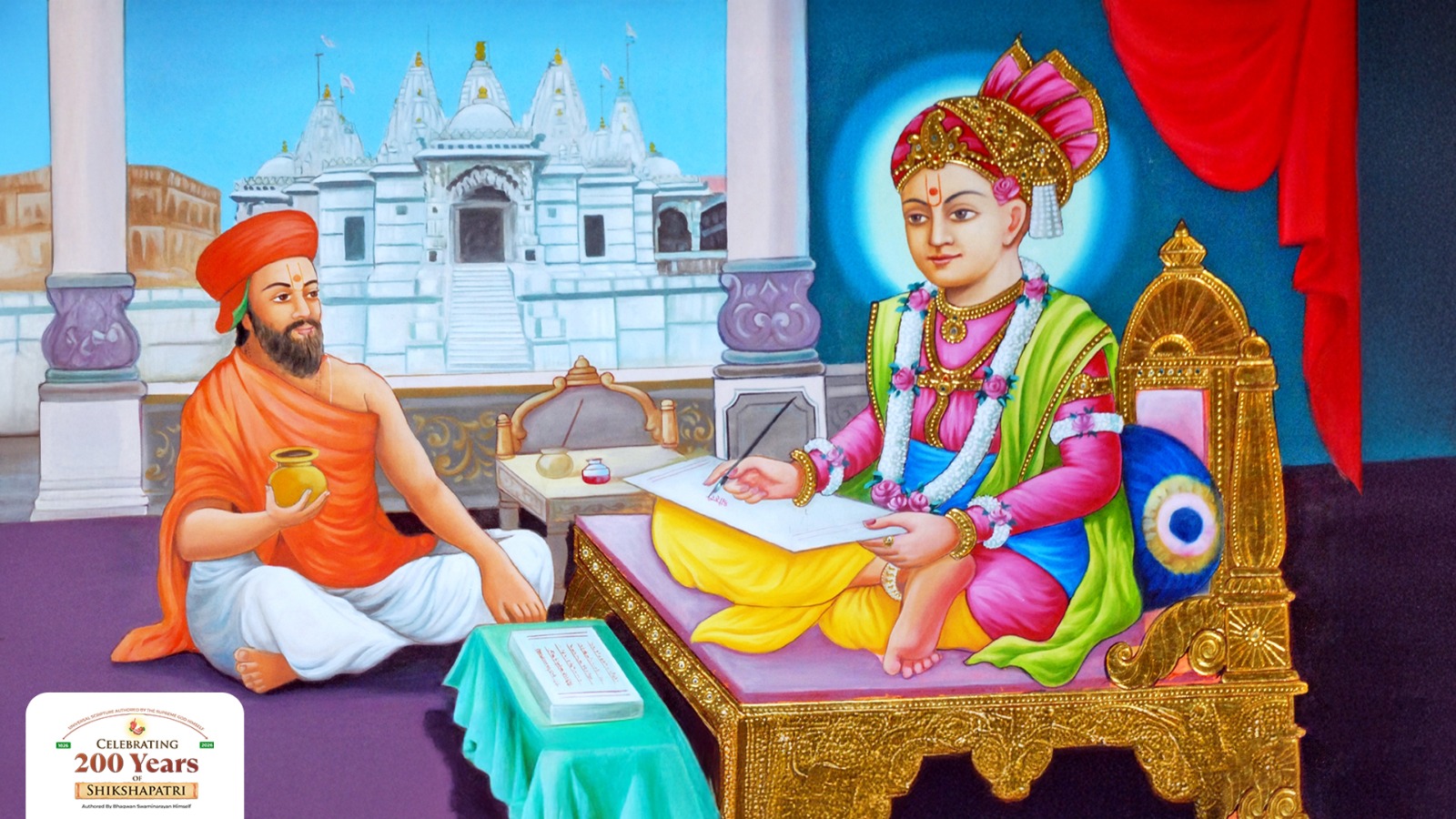Shikshapatri
Universal Scripture Authored By Supreme God Himself
The Shikshapatri is a timeless scripture composed by the Supreme Godhead, Bhagwan Shree Swaminarayan, on the auspicious day of Vasant Panchami, in Vikram Samvat 1882 (11th February, 1826). This sacred text, consisting of 212 Sanskrit shlokas, was authored by Bhagwan Himself while seated in the Hari Mandap, His residence within the holy temple of Vadtal.
Recognizing the importance of making these divine teachings accessible, Bhagwan Shree Swaminarayan entrusted Nityanand Swami, a learned saint, with translating the Shikshapatri into Gujarati. Since then, it has been translated into numerous languages around the world.
The Shikshapatri contains both universal codes of conduct and specific injunctions tailored to various groups of followers, including:
- Acharyas and their Wives
- Householder Men and Women
- Widows
- Saints and Brahmacharis
A historic moment took place on 20th February 1830, when Sir John Malcolm, the British Governor, met Bhagwan Shree Swaminarayan in Rajkot. The Governor was welcomed with full military honors. In an exceptional display of mutual respect, Sir John Malcolm personally received Bhagwan Shree Swaminarayan, offering him a ceremonial shawl and a royal chair. In a gesture of reciprocal goodwill, Bhagwan Shree Swaminarayan presented the Governor with a copy of the Shikshapatri.
This very copy is now preserved with great care in the Bodleian Library of the University of Oxford, England, standing as a symbol of cultural and spiritual heritage that bridges the East and West.



